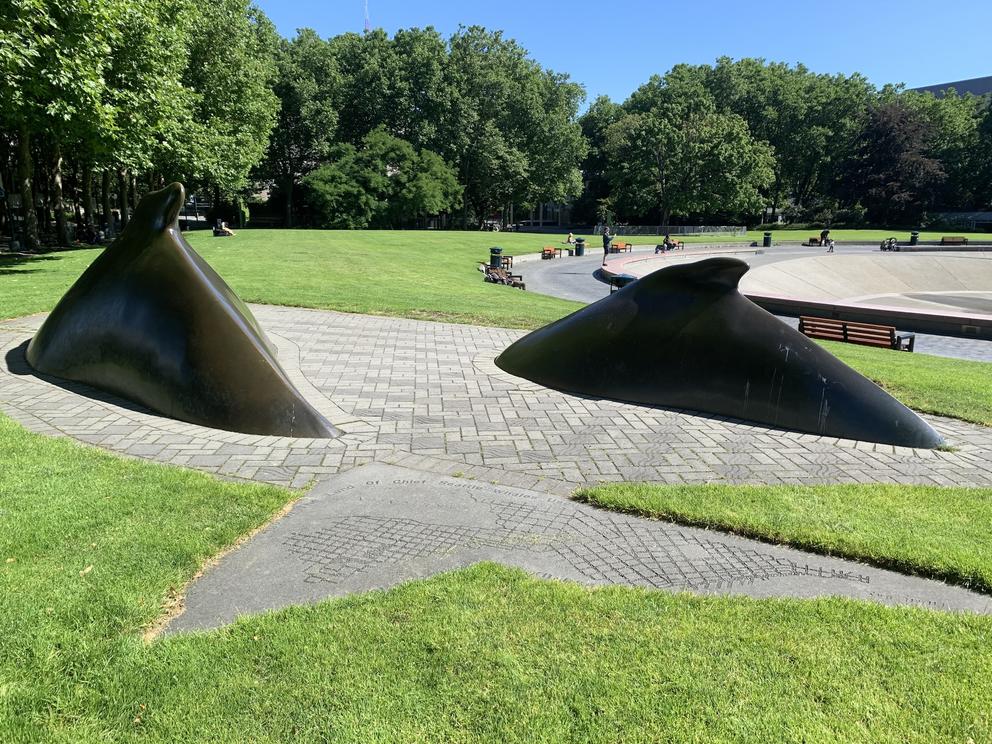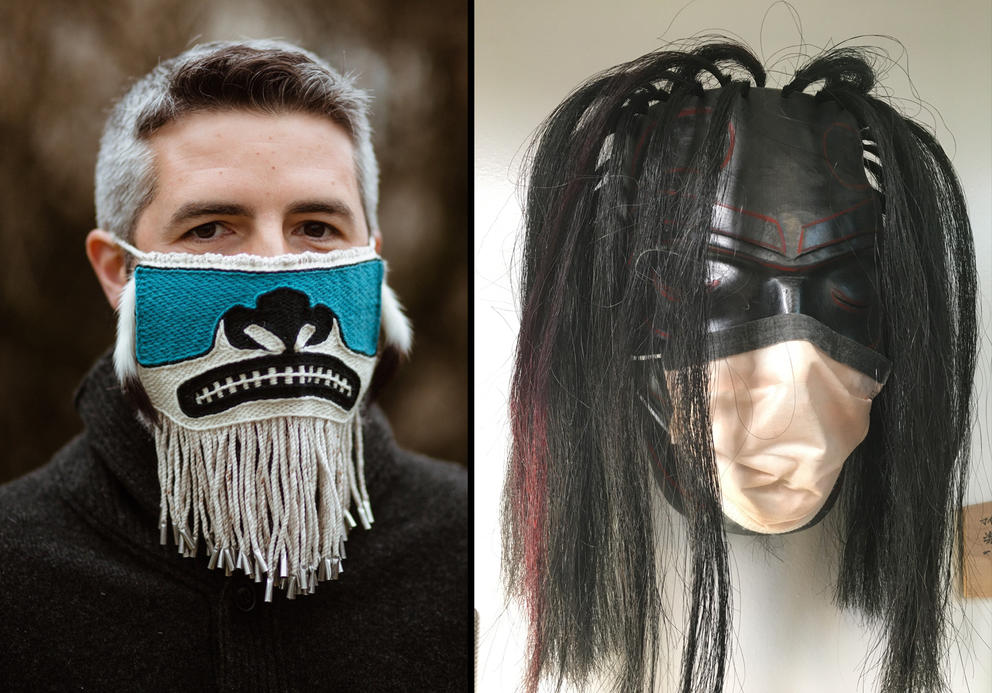I was stopping in only for a minute, but walking into the empty newsroom, I experienced a bit of a time warp. Was I just there yesterday, or had it been years? This is one of the strange effects of the coronavirus restrictions: the blurry sensation that time is passing differently... or not passing at all.
One of the things I’ve missed about working at Seattle Center is the history embedded in the campus, the lingering reminders of the 1962 World’s Fair, which was all about the future. I loved walking around at lunchtime and seeing vestiges of the past — the stories of which are still unfolding in the present — from the Space Needle (was its iconic shape inspired by a Black Seattle dancer?) to the ill-fated Mercer Arena gargoyles (whose long history ended in a dumpster). All the stories that are still unreeling remind me that so many other stories have been forgotten.
On my recent visit, I took a stroll through my old stomping grounds. While it was disheartening to see so many arts venues closed because of COVID-19 precautions (McCaw Hall, SIFF Film Center, Vera Project, Cornish Playhouse, KEXP Gathering Space), I must admit it was nice not having to contend with summer crowds. I lingered over some of my favorite public artworks, such as “Typewriter Eraser, Scale X” (1999), by Claes Oldenburg and Coosje van Bruggen, an homage to technologies past.
The piece appears to tilt at the wind, pushing forward to erase everything in its path. My grandmother had one of these rolling erasers, and I remember as a kid being fascinated by the little editing tool and its self-contained brush. Decades later, I showed my much younger half-sister the sculpture in Seattle; she thought it was a pizza slicer. The meaning fades with each generation.
Continuing my walk, I checked out the progress on Key Arena — er, Climate Pledge Arena (Amazon’s naming efforts could’ve used a few more passes of the typewriter eraser). The old-fashioned red skeleton key that once adorned the top of the building is gone, with nothing to replace it yet. For the time being, the suspended concrete roof — an engineering feat and historic landmark — looks much as it did during the World’s Fair. But now it’s surrounded by a construction fence, enlivened with four beautiful murals by Seattle street artists (Paola Delfin, Sam “Sneke” Swanson, Gabriel Marquez and Angelina Villalobos), all of whom make work that’s inherently temporary.
Last week the Crosscut arts and culture team dove deep into the ephemeral nature of graffiti and murals, in stories exploring the motivations of local muralists, how and whether (and by whom) the local coronavirus and Black Lives Matter protest murals should be saved, and what it means when graffiti is removed from its element and preserved as art. Street art captures a moment in time, but gets lost, painted over, replaced with the latest thing.
As I admired the murals, a small flock of tourists rolled by on a newer wheeled technology: Segways, which they dismounted to take selfies in front of the International Fountain. I watched the festive water jets while standing between the bronze backs of two whales arcing into concrete at the southwest side of the fountain. Called “Neototems” (1995), the piece is often covered with kids — those smooth dorsal fins are hard to resist climbing. But this time I noticed part of the sculpture I’d never seen before: a map etched into the concrete, surrounded by words in English and Lushootseed.
I had to pull back some overgrown grass to read it: “A long time ago in the land of Chief Seattle whales used to pass from Elliott Bay to Lake Union.” Uh, they did what? I had happened to grab the book Art in Seattle’s Public Spaces (2018) off my desk at the office, so I looked up “Neototems.” Turns out Seattle artist Gloria Bornstein based the piece on a Salish legend that whales once used an underground spring to pass between the two bodies of water (long before they were named Elliott and Union). A lovely and ancient story, largely erased.
The mission of the Washington State History Museum is to preserve regional stories past and present. The organization is still seeking your “artifacts” from the coronavirus era, so that future generations can better understand what daily life was like during this period. And today, the museum opened a new online show of work by contemporary Native American artists, which celebrates age-old traditions while embracing the new.
In the Spirit (free online, now through Sept. 28) is an annual juried show, which this year features 24 pieces by 20 artists, including RYAN! Feddersen (known for contemporary updates to the trickster coyote legend), Jeffrey Veregge (whose most recent show blended superheroes, sci-fi, Coast Salish formline and the Seattle World’s Fair) and renowned glass artist Dan Friday, who notes in his artist statement that his grandfather’s totems were “contemporary at their time.”
Also included are two pieces that illustrate time’s tendency to fold over on itself, which is only amplified by the global pandemic. “Sign of the Time,” by Micah McCarty (Makah) is a traditional hand-carved “wildwoman” mask covered with a COVID-19 mask. “Chilkat Protector,” by Lily Hope (Tlingit) is a mask the artist wove of thigh-spun merino and cedar bark wrap. “Our Chilkat robes woven on the Northwest Coast of Alaska have been worn in ceremonies for hundreds of years,” Hope explains. “‘Chilkat Protector’ is recording our history now. Telling our story now. Charting our future now. Bringing past to present.”
Get the latest in local arts and culture
This weekly newsletter brings arts news and cultural events straight to your inbox.








